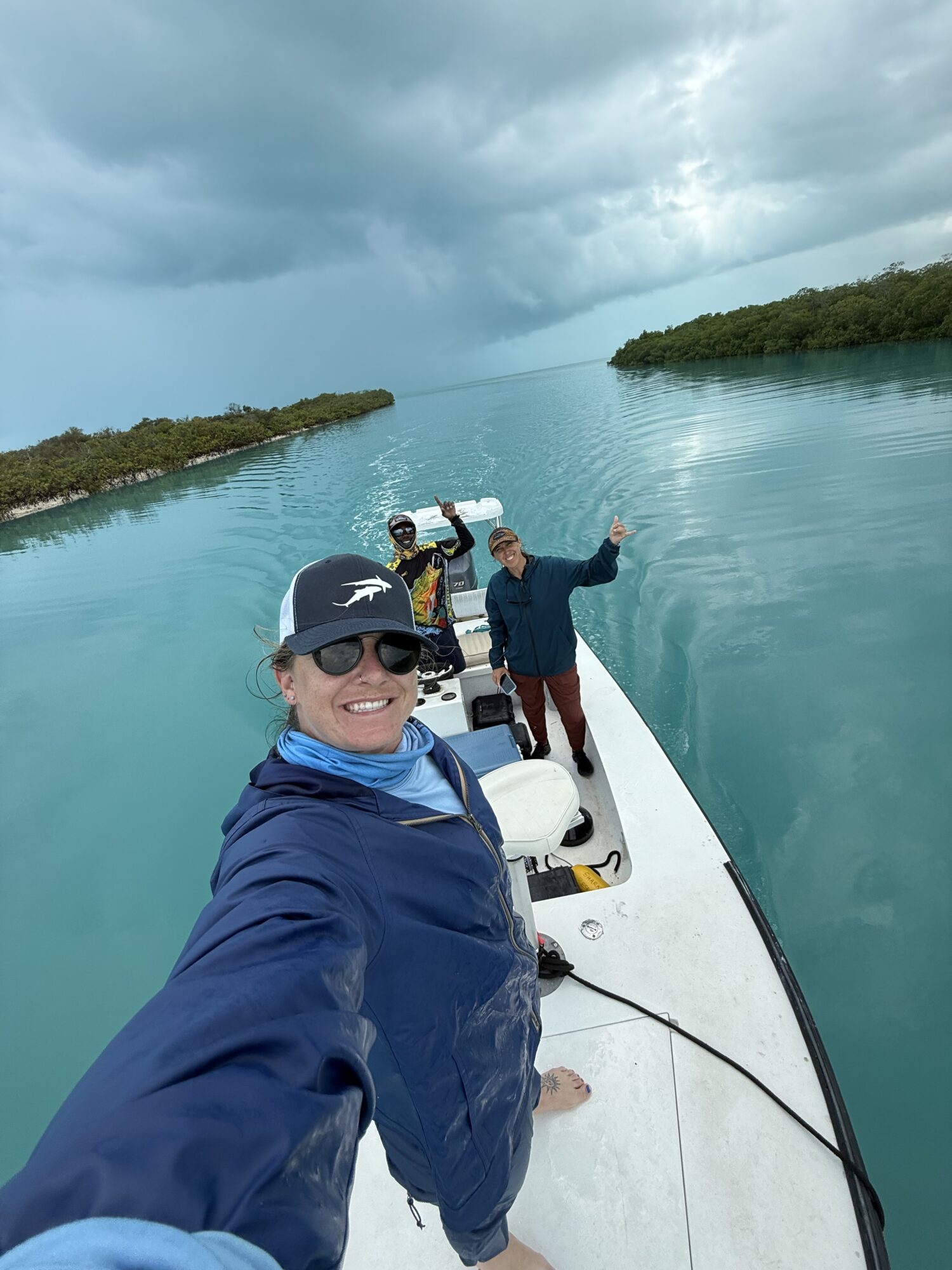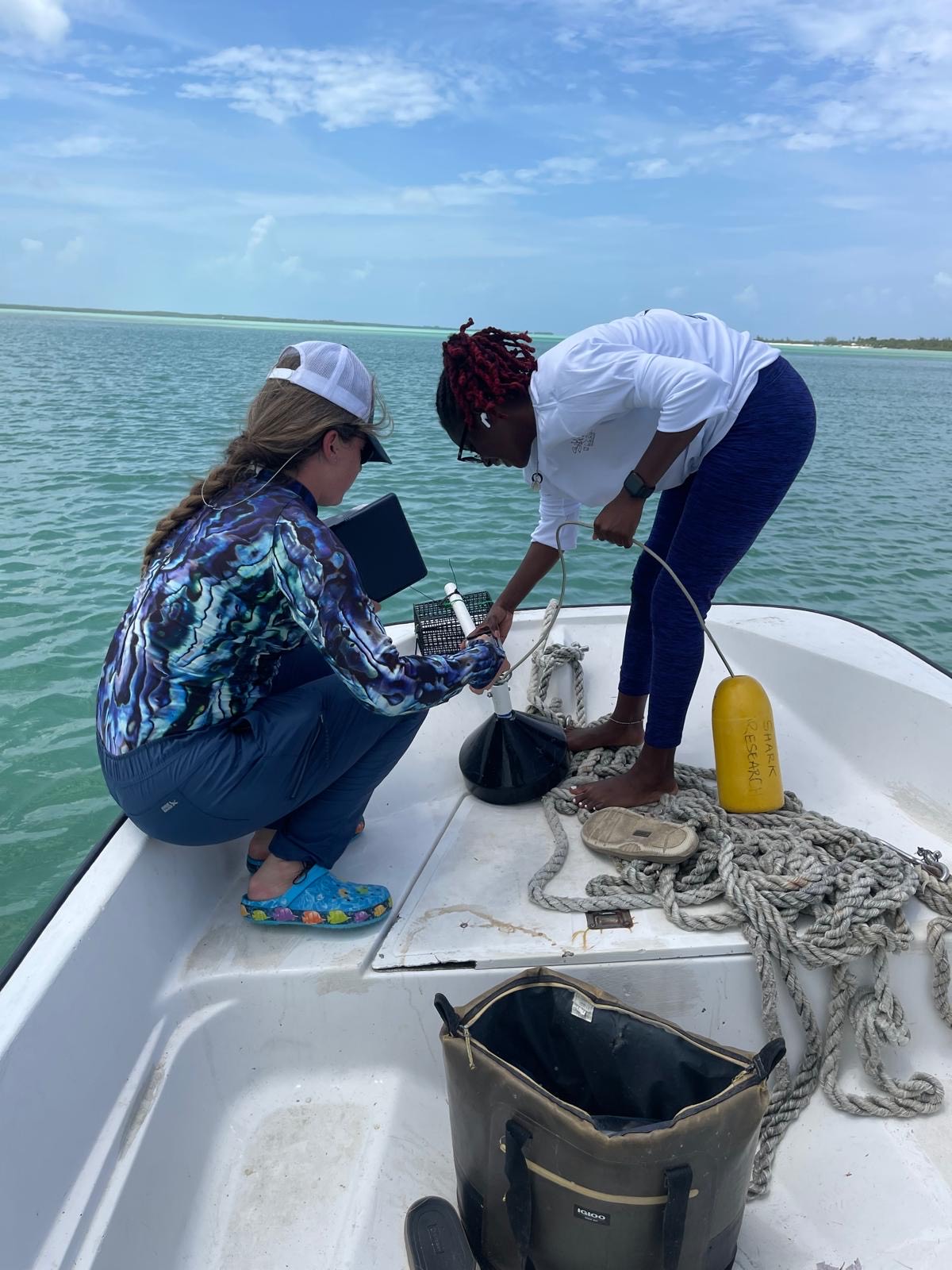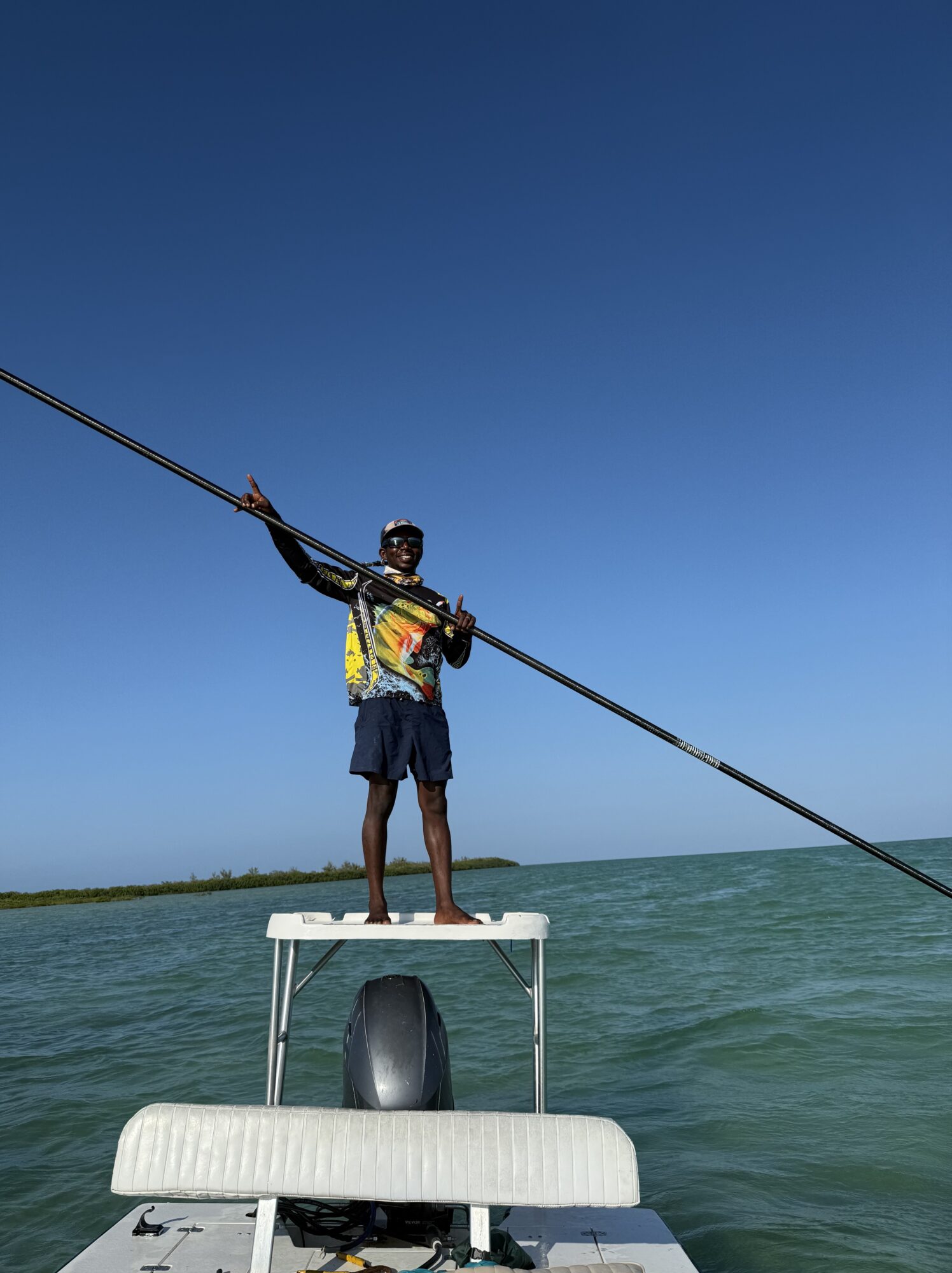Master of disguise – the elusive sawfish!
The Critically Endangered smalltooth sawfish, Pristis pectinata is a master of disguise, an expert in stealth; evading almost all detection in Andros for the past two years. Flying over the shallow, turquoise waters of the largest island in The Bahamas, your eyes instinctively lock on to every winding creek and sunlit shoreline, unwilling to blink for fear of missing this elusive predator.
After landing and settling into the Bonefish Lodge, the mission begins in excitement! Every conversation, every glance toward the water carries the same purpose: to find the smalltooth sawfish. Armed with aerial drone surveys, baited remote underwater video (BRUV), and the invaluable knowledge of local fishing guides, alongside the expertise of the Saving the Blue team, we set out with cautious optimism.

Searching the murky creeks of Andros Island. Photo © Morgan Cleary | Saving the Blue
Mornings start with a list of preparations: cutting bait, packing gear, and loading the boat for what will be a long day under the Bahamian sun. If the weather cooperates, we conduct 3–4 hours of aerial drone transect over the shallow creeks, scanning from above for any movement along the sandy bottoms. Aerial surveys allow us to achieve further distances and capture animal behaviour with little to no human impact.
Meanwhile, the rest of the team fills bait cages and deploys BRUVs for hour-long soaks, hoping the scent will draw in whatever patrols these waters. Baited cameras offer the potential to capture different feeding or social behaviours within these bustling ecosystems. This design allows us to drop the cameras in our ideal locations, typically very shallow water <1m or 3ft, set them for an hour and leave them to conduct other visual survey methods in the area. This type of multi-tasking between gears is a vital part of marine research, particularly for cryptic species like sawfish. During both the aerial and camera surveys, the Saving the Blue team is noting any animal sightings observed on a ‘live’ drone viewing screen and around the BRUVs, any local activities such as fishing or boating, and any weather changes that could alter the visibility

Deploying a mini BRUV in search of sawfish. Photo © Morgan Cleary | Saving the Blue
Combining aerial and underwater video techniques boosts our chances of success. On days when we push further from home, we make the most of every mile traveled. Sometimes, the most promising spots require a quieter approach, like the time our local guide, DJ, pushed us silently through knee-deep channels so we could scan the white sand below for the faint shadow of a sawfish. Working within the local community allows us to gain knowledge that we would have never read about. These fishers spend thousands of hours a year on the water and often record sightings of their own which further contribute to our studies.
It is a slow, methodical search, part science, part patience, and part luck. Out here, the sawfish are in charge, but every ripple, every shadow, carries the possibility that today might be the day we see one face-to-rostrum.

Fishing guide, DJ, poling in the creeks of Andros Island. Photo © Morgan Cleary | Saving the Blue
